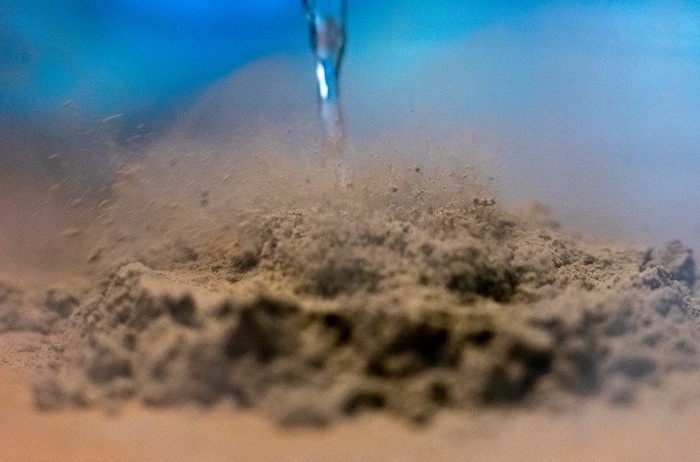
One of the last times we did an article about a technology that could remove lunar dust from clothing, we opened it with a famous meme line from Star Wars. That also means we should probably avoid subjecting everyone to it again here. Still, the fact that we’ve had an opportunity to use it more than twice recently proves that removing lunar dust is a problem that has attracted a lot of attention in recent years. Artemis, NASA’s program to go back to the Moon this decade, is the cause of a lot of that attention as there are plenty of problems still to overcome. Some of those might be solved by a technique developed by a team at Washington State University (WSU) that uses every child’s gas that allows them to pound nails in with bananas – liquid nitrogen.
Most likely, there will be better tools than bananas to pound in nails on any upcoming lunar mission – if there are even any nails. But apparently, blasting surfaces that are coated in lunar dust with liquid nitrogen removes up to 98% of the dust purposefully embedded in a mock space suit.
Part of the reason is the impressive ability of lunar dust to stick to almost everything electrostatically. The press release from WSU compared its clinginess to that of packaging peanuts, but with much darker health implications that could include an illness like black lung if exposed to it for long enough.
That alone would be enough reason to try to find a way to get it off of materials that might make it inside any permanent Moon base. But lunar dust is also particularly abrasive, causing it to degrade parts of the Apollo astronauts’ space suits, especially in the relatively soft and malleable seals. Since those are vital to keeping the breathable gas in and the deadly vacuum of space out, it makes it even more critical to ensure that dust doesn’t degrade any Artemis mission space suits to the point that it might be potentially dangerous.
Unfortunately, to solve the problem on the Apollo missions, the astronauts used a technology that wasn’t even considered advanced back in the 1960s – a brush. The brush itself could have a negative impact on the materials of the space suit as well, and it was abysmal at actually removing the dust particles. So enter WSU’s liquid nitrogen technique.
Underlying this idea isn’t so much a new technology but a novel use for an old one. Liquid nitrogen has been around for years, but when applied to a space suit that is significantly warmer than itself, it induces a phenomenon known as the Leidenfrost Effect. In everyday life, this would be most familiar if a cook pours cold water on a hot frying surface – or if you’ve ever been to a hibachi restaurant. The temperature differential causes the liquid material to bead up and try to escape the surface as quickly as possible.

A homemade space suit was the focus of these preliminary experiments, with the suit being coated with lunar dust, subjected to a vacuum and then treated with liquid nitrogen.Credit – WSU / Wells et al.
When the liquid nitrogen beads up on the space suit material, though, they encapsulate the lunar dust particles and force them off the material’s surface, overcoming their electrostatic clinginess by simply engulfing them entirely in liquid. After proving their original point, the researchers had to prove it would work on the Moon.
One of the easiest ways to do so would be to do it in a vacuum, which is precisely what they did. Surprisingly the sprayer performed better in the vacuum than in the regular Earth operating environment. However, more work still needs to be done to test whether it would function in lunar gravity.
To support that work, the WSU researchers are applying for grants to further their research and already took home a prize at NASA’s Breakthrough Innovative and Game-changing Idea Challenge in 2022. Further modeling will also come as part of the deal, as no good research on this topic can happen without a valid, complex fluid dynamics model – or a Star Wars reference.

Learn More:WSU – Liquid nitrogen spray could clean up stubborn moon dustWells et al – Lunar dust removal and material degradation from liquid nitrogen spraysUT – Figuring Out How To Breathe the Moon’s RegolithUT – Finally! A Solution to Deal With Sticky Lunar DustUT – Lunar Dust is Still One of The Biggest Challenges Facing Moon Exploration
Source: universetoday.com








